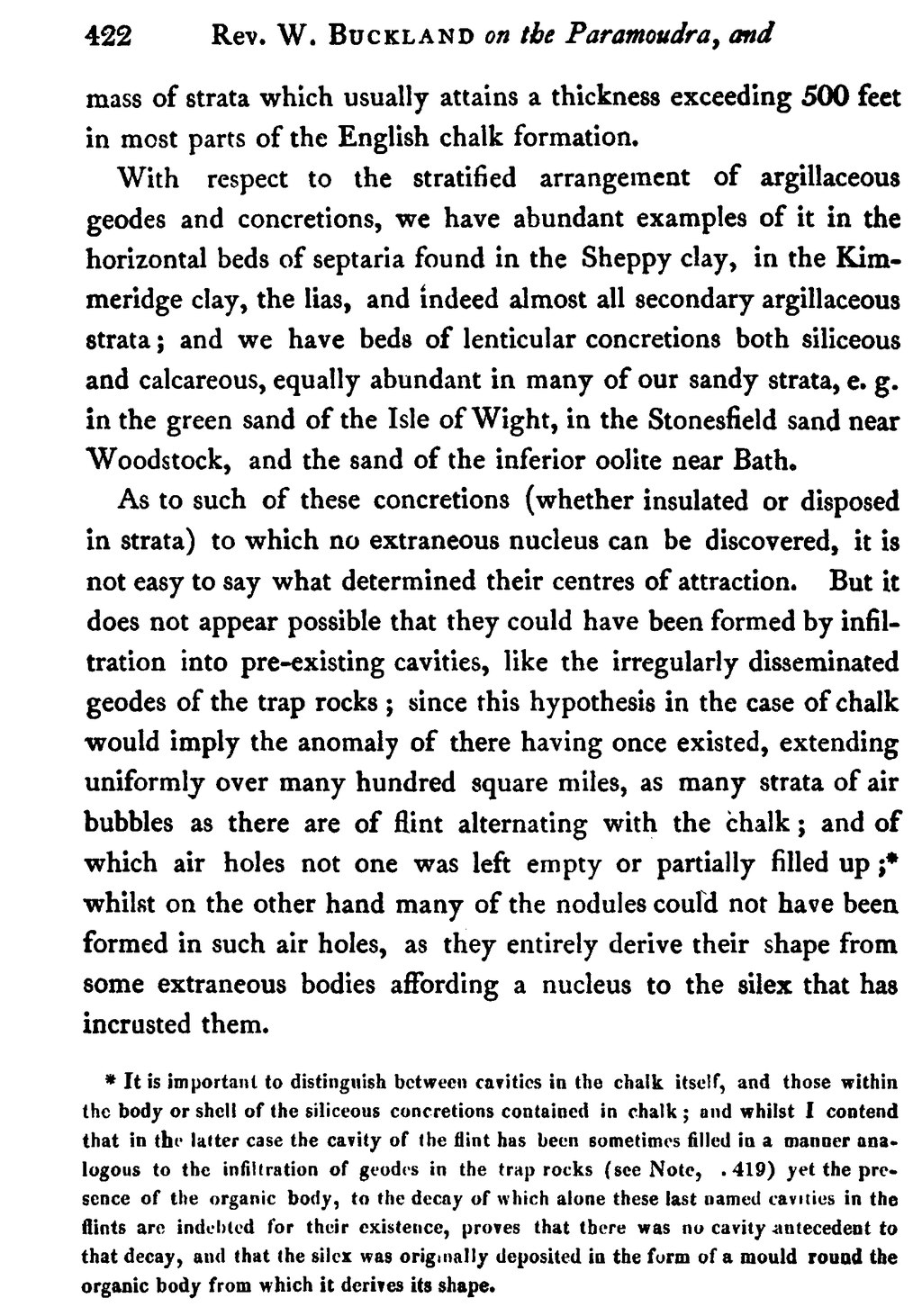mass of strata which usually attains a thickness exceeding 500 feet in most parts of the English chalk formation.
With respect to the stratified arrangement of argillaceous geodes and concretions, we have abundant examples of it in the horizontal beds of septaria found in the Sheppy clay, in the Kimmeridge clay, the lias, and indeed almost all secondary argillaceous strata; and we have beds of lenticular concretions both siliceous and calcareous, equally abundant in many of our sandy strata, e.g. in the green sand of the Isle of Wight, in the Stonesfield sand near Woodstock, and the sand of the inferior oolite near Bath.
As to such of these concretions (whether insulated or disposed in strata) to which no extraneous nucleus can be discovered, it is not easy to say what determined their centres of attraction. But it does not appear possible that they could have been formed by infiltration into pre-existing cavities, like the irregularly disseminated geodes of the trap rocks; since this hypothesis in the case of chalk would imply the anomaly of there having once existed, extending uniformly over many hundred square miles, as many strata of air bubbles as there are of flint alternating with the chalk; and of which air holes not one was left empty or partially filled up;[1] whilst on the other hand many of the nodules could not have been formed in such air holes, as they entirely derive their shape from some extraneous bodies affording a nucleus to the silex that has incrusted them.
- ↑ It is important to distinguish between cavities in the chalk itself, and those within the body or shell of the siliceous concretions contained in chalk; and whilst I contend that in the latter case the cavity of the flint has been sometimes filled in a manner analogous to the infiltration of geodes in the trap rocks (see Note, p. 419) yet the presence of the organic body, to the decay of which alone these last named cavities in the flints are indebted for their existence, proves that there was no cavity antecedent to that decay, and that the silex was originally deposited in the form of a mould round the organic body from which it derives its shape.
